Contents
- 1. Definition of the four classes (Chaturvarnya)
- 2. Animals and the four classes
- 3. Society and the four classes
- 4. Motive (principle) and importance
- 5. Special features
- 6. Creation of the four classes
- 7. History
1. Definition of the four classes (Chaturvarnya)
The social system created to assist everyone in society to behave based on his natural temperament, that is the constitution composed of the three components (triguns) and his spiritual evolution is the system of the four classes (chaturvarnya). In other words, this system of four classes incorporated in Righteousness (Dharma) is meant to provide guidance with regard to behaviour and spiritual practice to be undertaken in accordance with qualifications, that is potential and requirement, so as to acquire Bliss.
2. Animals and the four classes
The system of four classes is observed not only in man but also among flora and fauna. Among animals the cow and serpent who are sattvik (sattva predominant) belong to the Brahman class while the tiger and lion who are rajasik (raja predominant) in nature belong to the Kshatriya class. This means that a class is a state which is determined by the three components (guns).
3. Society and the four classes
‘A group of people which lacks study and preaching, lucrative transactions and service and fails to protect its people is not deserving of this description of society.’ (1) This means that society certainly has four types of individuals and four classes.
4. Motive (principle) and importance
A. ‘The creation of the classes described by authors of the Smrutis is based on division of labour. They were meant to strike a balance between various societal groups without leading to any rift between them. In that system of classes rather than the rights and privileges of the different classes emphasis was laid on the performance of duties.’ (2)
B. ‘In any family on the basis of genetics generally the children resemble the parents with regard to the complexion, temperament, intelligence, etc. Considering this as the foundation, authors of the Smrutis such as Manu laid down the rules for constituting the societal pattern. Manu came across different people with qualities required for a particular task in a particular social setup and believed the qualities to be inherited. He then allotted the responsibility of different tasks beneficial to society to those particular classes.’ (3)
C. Lord Shrikrushna has said (Shrimadbhagvadgita 4:13) ‘चातुर्वर्ण्यं मया सृष्ट्यं गुणकर्मविभागश: ।’. This means, ‘I have created the four classes (varna) according to components (gun) and actions (karma)’.
D. Each one is born in a particular class depending on his potential to practise Spirituality or according to his need for that particular spiritual practice. The Lord’s motive behind establishing this system of four classes was for man to re-enter the Hansa class (refer point ‘The period preceding the Satyayug’) after he had fulfilled the obligations of all the four classes. This means that the restrictions of the four classes imposed by The Lord are in fact meant to destroy the four classes. The same point has been emphasised in the Shri Eknathi Bhagvat (20.314, 21.209-210).
5. Special features
A. Psychologically one: Mentally all the four classes are close to each other because they are all parts of the same Universal Being (Virat Purush). The Purushsukta states that the Brahman (priest) was created from the face, the Kshatriya (warrior) from the arms, the Vaishya (businessman) from the chest and the Shudra (labourer) from the legs of the Universal Being.
Variant meaning: The face of the Universal Being is the Brahman, the arms are the Kshatriya, the chest is the Vaishya and the legs are the Shudra.
B. Different worldly duties: The worldly duties of every class are different, e.g. imparting knowledge is the duty of the Brahman.
C. Equality in terms of attaining Brahman (God): Manu has preached that all have an equal right to realise Brahman. This will be explained by the verse (shloka) below as –
अहिंसा सत्यमस्तेयं शौचमिंद्रियनिग्रह: ।
एतं सामासिकं धर्मं चातुर्वर्ण्येऽब्रवीन्मनु: ।। – मनुस्मृति १०.६३Meaning: Manu says that non-violence, truth, not committing theft, external and internal purity and control over the sense organs is the common code of Righteousness for people of all the four classes. – Manusmruti 10.63
6. Creation of the four classes
6.1 The three components, four aspects of Righteousness and the yugs (eras)
A. The period preceding the Satyayug: During those days there was only one class – the Hansa class, the four classes did not exist then. Hansa also means the soul. All the people from that period were engrossed in the spiritual experience of Self-realisation. They were not even aware of the state of Self-realisation. Even if they did descend from the nirvikalpa superconscious state (samadhi) they would descend at the most to the state where they harboured the spiritual emotion that ‘He (God) is I (so’ham)’.
B. The Satyayug (Krutyug):
Origin: As society regressed from the spiritual emotion of ‘He is I (so’ham)’ to ‘I am distinct from Brahman (aham)’ the yugs commenced and began changing.
Features: Even in the Satyayug there was only the Hansa class; but often they were aware of their state of supra consciousness. God has preached Righteousness of two types – materialistic and spiritual. Every being who was spiritually inclined was aware that ‘I am not this body, I am the soul’. All who followed the path of Spirituality (nivruttimarg) were in a state of Self-realisation, that is had lost the spiritual emotion that ‘He is I’. In other words their ignorance as well as spiritual knowledge was totally destroyed. God established a link between the two righteous factions by entrusting the responsibility of providing for those following the path of Spirituality to those following materialism (pravruttimarg). So long as this link was not broken, man was happy. The circumstances prevailing during that period were as described below.
During this yug since all were sattvik (sattva predominant) in nature they behaved righteously. Consequently there was absolutely no need for a code of punishment (an administrative system).
न वै राज्यं न राजासीत् न दण्डो न च दण्डिक: ।
धर्मेणैव प्रजा: सर्वा: रक्षन्ति स्म परस्परम् ।।Meaning: In an ideal state there were no criminals so there were also no rulers to punish them. Since there was no king, there was no state. Each one would follow the code of Righteousness and protect the other.
Spiritual practice: Righteousness in the Satyayug consisted of the four aspects of 1. Spiritual knowledge (spiritual practice of the Brahman class), 2. Penance (spiritual practice of the Kshatriya class), 3. Offering (spiritual practice of the Vaishya class) and 4. Truthfulness (spiritual practice of the Shudra class). When these four aspects of Righteousness remain secure, that is they are followed by the society, the Satyayug reigns in its full glory. At that time the evolved and sattvik (sattva predominant) intellect necessary for acquisition of spiritual knowledge was present along with the potential to perform austerities and the attitude of donating generously. Besides all were truthful. All the people in the Satyayug had knowledge of the Absolute Truth (soul principle), were righteous, prudent and sattvik. That is why each one’s existence proved conducive for the other. No one was exploited. Thus it is automatically proved that only if everyone remains righteous then harmonious living is assured.
C. The Tretayug
Origin: युगे युगे धर्मपाद: क्रमेण अनेन हीयते । – चरकसंहिता
Meaning: In every yug one aspect of Righteousness decreases progressively. – Charaksanhita
Nature (Prakruti) being composed of the three components, some time or the other the raja and the tama components are bound to generate from the sattva component. Once this occurs it is but natural for the spiritual emotion towards The Supreme Soul to get reduced. It is then that deterioration of Righteousness begins. As a result, the Righteousness that was endowed with the four aspects of spiritual knowledge, austerities, offering and truth in the Satyayug becomes weak in one aspect, that is spiritual knowledge. This indicates the culmination of the Satyayug and commencement of the Tretayug.
Spiritual practice: In the Tretayug as evolution of the intellect diminished, penance, offering and truthfulness remained as spiritual practices.
Creation of an administrative system: When the link between Righteousness of worldly and spiritually inclined individuals weakens, the sattva temperament of man undergoes regression. According to the law generated due to unrighteousness that a big fish swallows a small one, the powerful destroy the feeble. It then becomes extremely necessary to create a system of punishment, that is an administrative system to induce rationalism and to arrest this anarchy. That is why the Mahabharat (12.64.21) quotes –
चात्रो धर्मो ह्यादिदेवात् प्रवृत्त: पश्चादन्ये शेषभूताश्च धर्मा: । – महाभारत १२.६४.२१
Meaning: The Supreme God first created the code of Righteousness of rulers (rajadharma) and then incorporated other codes of Righteousness in it.
In the Tretayug after creation of the ruling system Kshatriyas (warriors) having mastery over their sense organs became the rulers and their chief responsibility was the protection of Brahmans and cattle. The effulgence of Kshatriyas continued uninterrupted with the support of the effulgence of Brahmans (priests). The kings themselves were moralistic. They would observe Righteousness in its totality, behave righteously themselves and make their subjects follow suit. All the kings from the Tretayug would crown their son the king and then renouncing everything would retire to the forest clad in robes made from the bark of a tree and enter the stage of the retired householder (vanaprasthashram). Does this not prove that they had control over their sense organs right from the stage of celibacy (brahmacharyashram)? It is then that one feels compelled to revere Arya Chanakya by offering obeisance to Him for His aphorism (sutra) ‘राष्ट्रस्य मूलं इंद्रियनिग्रह:’ meaning control over the senses is the basis of governing a state, which illustrates what an indepth study He had made when writing it.
‘Until the middle part of the Tretayug the influence of the elapsed time had become quite evident. Kshatriyas began to forget that their duty was to protect subjects and that their ultimate aim was attainment of Brahman (Self-realisation) and began to perform fire sacrifices (yadnyas) to acquire more and more power and victory. One favourable outcome of this extraordinary prowess of the Kshatriyas was that demons began to fear them. Ravan felt threatened by Sahasrarjun, a Kshatriya monarch. Later however the Kshatriyas became arrogant and vain due to excessive power. They forsook humility. As a result Sahasrarjun slew Parshuram’s father, Sage Jamadagni. The enraged Parshuram then resolved to destroy the Kshatriyas (warriors) blinded with pride and slew thousands of them. This was favourable for demons who then began to create chaos everywhere. Consequently The Supreme God had to assume an incarnation of a Kshatriya. The seventh incarnation of Lord Vishnu, Shrirama was born in the Tretayug. In this incarnation, Lord Ramachandra annihilated all demons and commenced efforts to reinstate the system of the four classes.’ (4) Rama became the monarch. It is because He ruled the kingdom ideally that Rama’s rule of Righteousness (Ramarajya) is considered as an ideal state. Since then the code of punishment was decided to be the basis of the three sciences (paths of Spirituality) of anvikshiki (path to Liberation), trayi (path of materialism) and varta (business). When this code of punishment becomes ineffective, the three sciences are destroyed.
Origin of the four classes: After creation of the king (the Kshatriya) the other three classes also came into existence.
Origin of astrology: ‘As the time for culmination of the Krutyug approached, the planets and the lunar asterisms began exerting their influence on the earth. Though at that time it was possible for the sages (brahmarshis) to decide which embodied soul would take birth in whose womb yet in the forthcoming period it would be impossible to do so. It would be difficult to tell someone that ‘your son is a Shudra’ because the time to come would be dominated by egoism, hatred, arrogance, jealousy, hypocrisy, anger, covetousness and desire. It was necessary to formulate many means to tackle this; hence the sages created various sciences, astrology being a very important one among them. Astrologers would predict the class (varna) of a newborn studying the positions of the planets. Then the child would be allotted a profession based on its class. Apart from this as a remedy against the frequencies of planets, gemmology, study of various metals (dhatushastra) to be used on human body and study of plants (vanaspatishastra) to reduce the ill- effects of plants were created to assist man in the endeavour to progress.’ (5)
D. The Dvaparyug
Origin: Later as the proportion of the sattva component decreased further two aspects of Righteousness were destroyed and the Dvaparyug originated. The kings became average, that is averagely righteous. Consequently the subjects followed suit.
Spiritual practice: In the Dvaparyug as there was a decline in the attitude to perform austerities only the two spiritual practices of offering and truthfulness remained and the sattva component declined even further.
History: ‘At the beginning of the Dvaparyug the natural system of the four classes had begun once again. When Duryodhan was born, Maharshi Vyas had clearly apprised that “if he is not killed at once the Bharatiya war (a destruction of the family lineage) would ensue” because he was not a Kshatriya (warrior) but a demon born in a Kshatriya family. That is why instead of safeguarding the code of protecting seekers and destroying evildoers (kshatradharma) a deceitful and malicious rule would prevail. The real Kshatriyas would be banished into the forest. Till the Dvaparyug, time had exhibited its effect immensely. King Dhrutarashtra disobeyed Maharshi Vyas and let Duryodhan live. As a result Lord Shrikrushna had to assume an incarnation and the Bharatiya war was waged.’ (6)
E. The Kaliyug
Origin: Soon after the culmination of the incarnation of Lord Krushna the proportion of the sattva component decreased tremendously. Three components of Righteousness declined completely, only truthfulness persisted. At that time the current Kaliyug commenced.
Spiritual practice: As even the attitude of making offerings is absent in the Kaliyug, The Lord has made an arrangement such that even speaking the truth amounts to spiritual practice.
Changes occurring in the Kaliyug according to the prevailing time: ‘Later in the Kaliyug as a result of falling prey to awareness of the body, there is a deterioration in Righteousness, that is a collapse in the structure of the four classes. Kaliyug is an era of ignorance, darkness and egoism. During this period due to exhaustion of the Brahman (priestly) qualities in Brahmans (seekers), instead of worshipping Brahman and making efforts to realise the Brahman principle, they became blind, ignorant, foolish and egoistic. Brahmans themselves were unable to comprehend the meaning and code of Righteousness of a Brahman and the qualities that a Brahman (priest) should possess. Forgetting the righteous code of conduct of a Brahman like selflessness and penance, Brahmans became greedy to procure offerings and vain about their caste. Kshatriyas (warriors) forgot valour and their ultimate aim and resorted to malicious conduct and politics. Internal feuds and dissensions and deceitful rule as well began in royal dynasties. Vaishyas (businessmen) became an icon of greed and Shudras (labourers) lost their status totally.
In brief the truth is that in the Krutyug all were Brahmans (knowers of Brahman) while in the Kaliyug all have become deluded and egoistic.
यथा कृतयुगे पूर्वमेकवर्णमभूत् किल ।
तथा कलियुगस्यान्ते शूद्रीभूता: प्रजास्तथा ।। – मत्स्यपुराण १४३.७८Meaning: Just as in the Satyayug there was only one Brahman class so also at the culmination of the Kaliyug there will be only the Shudra class (all people will become Shudras). – Matsyapuran 143.78
To add to this, demoniacal energies (embodied souls) took birth all over and attacked India in the form of Yavans (foreign invaders) thus disrupting its entire social system. They impoverished the country of its wealth and spiritual knowledge too. Ignorance and egoism had grown rampantly and the society had no saviour. At such a time various evolved beings and sages from the Himalays have assumed incarnations in the past two thousand years of this Kaliyug with the aim of diverting the society onto the righteous path. These attempts are still continuing and will continue in the future as well.
The sole objective of this system of the four classes is to protect man from the flow of time and to liberate him. However time proved detrimental to this objective and the collapse of this wonderful social system led to hatred, strife and the caste system.’(7)
‘The duration of the Kaliyug is 4,32,000 years of which uptill now 5,500 years are completed. In the current times the righteous conduct of man has virtually reached a nadir. At the culmination of the Kaliyug because of a peak in the tama component all creation will be unhappy in all aspects and there will be rampant unrighteousness. Few seekers desirous of Liberation (mumukshu) as well as other seekers and saints will find it difficult to survive and at that time due to their yearning God will hear their call. On the banks of the river Narmada in the Shambhal village the tenth incarnation of The Lord, named Kalki will be born to a righteous Brahman called Vishnugupta. He, mounted on a horse wielding a sword will destroy all the evildoers on the face of the earth and then will instate the Satyayug and return to His abode.’
In this way in every yug (era) one fourth of Righteousness on the earth declines and now it exists only in India. For more information on this refer ‘Science of Spirituality: Vol. 1 A – Righteousness (Dharma), Chapter 1 A A. What is Righteousness?, point – Righteousness and the importance of India’.
‘So long as the passage of time consisting of the three components continues the four classes will naturally remain! The question then is only of introspection! One should modestly contemplate on which class one actually belongs to and what one’s conduct should be like so as to make spiritual progress. To benefit from the system of classes one should give up the ego that ‘I belong to so-and-so caste’. When performing actions an attempt should be made to acquire the state of a Brahman, that is the sattvik (sattva predominant) nature, the love of The Lord and virtues.’ (8)
F. Comparison between yugs
1. The yugs and the four aspects of Righteousness
| Yug | Aspect of Righteousness and its effects |
| Satya | 4 hence stable |
| Treta | 3 hence less steady |
| Dvapar | 2 hence hardly steady |
| Kali | 1 hence unsteady |
2. Comparison
| Satya | Treta | Dvapar | Kali | |
| 1. Date (tithi) of commencement of the yug |
Third day of the bright fortnight of Vaishakh |
Ninth day of the bright fortnight of Kartik |
Thirteenth day of the dark fortni- ght of Bhadrapad |
The full moon day (pournima) /no moon day (amavasya) of Magh |
| 2. Lifespan of man (years) |
400 | 300 | 200 | 100 |
| 3. Aspects of Righteousness (Manusmruti 1.81-82) |
4 | 3 | 2 | 1 |
| A. Spiritual knowledge |
+ | |||
| B. Penance | + | + | ||
| C. Donation | + | + | + | |
| D. Truth | + | + | + | + |
| 4. Main qualities | Sattva | Sattva-raja | Raja-sattva | Tama |
| 5. Merits and sins | ||||
| A. Sins % | 0 | 25 | 50 | 75 |
| B. Merits % | 100 | 75 | 50 | 25 |
| 6. Spiritual practice |
||||
| A. Deity of worship |
Lord Brahma |
Yadnya (sacrificial fire) |
Vishnu | Mahadev |
| B. According to ‘Science of Spirituality’ |
Spritual knowledge |
Penance | Offering | Truth |
| C. According to the Vishnu- yug Puran |
Meditation | Fire sacrifice |
Worship (archan) |
Chanting The Lord’s Name |
| D. According to other Purans |
Knowledge | Penance | Spiritual practice of protecting seekers & destroying evildoers |
Service |
| 7. Guru of the universe (Jagadguru) according to ‘Mahannaya Setu’ written by Shri Shankaracharya |
Lord Brahma |
Vasishtha | Vyas | Shankaracharya |
6.2 Creation according to the doctrine of evolution
A. The Shudra (labourer): According to the doctrine of evolution protection of the body is the basic impression. All are Shudras at birth because they are born with the impression that ‘I am the body (जन्मात् जायते शूद्र: ।)’. It is said that ‘Shudras have no right to study the Vedas’ because Shudras (those who are concerned about their bodies) cannot think beyond their bodies. Their further progress depends on the proportion of the impressions (sanskar) of a Shudra on the embodied soul.
B. The Vaishya (businessman): With further evolution that individual begins to be concerned with nurturing his family and thus commences doing agriculture, business, etc.
C. The Kshatriya (warrior): With further evolution one begins to develop an affinity for a territory. This leads to the generation of the Kshatriya class. Now the affinity is for the country and not for one’s body hence patriots sacrifice even their lives for the country.
D. The Brahman (priest): In the final stage of evolution one becomes curious about The Lord and spiritual knowledge. This leads to the origin of the Brahman class.
7. History
7.1 Difference in social class
‘Different classes (varna) did not exist in the Vedic period but according to Mahamahopadyay P.V. Kane during that period there were different groups. Performing sacrificial fires, imparting knowledge and priesthood were the tasks of the Brahman group and administration and protection of the people were those of the Kshatriya group. Vaishyas were common people undertaking activities like commerce, farming, etc. Those indulging in menial labour and service were Shudras. In this way though societal groups were created based on actions (karma) yet any individual could perform whatever task he wished according to his liking.
7.2 Various classes (varna)
Gradually as time elapsed Brahmans, Kshatriyas, Vaishyas and Shudras began to be categorised into four classes. During the period of the Taittiriya Sanhita and the Brahman holy texts the relationship between the three the Brahman, Kshatriya and Vaishya classes was decided. Initially there was no discrimination between the three classes however gradually the concept that Brahmans (priests) were superior to the others developed. This practice was followed by the Kshatriyas (warriors). They began to feel that if Brahmans were superior because of their knowledge of the Vedas and fire sacrifices then they as Kshatriya kings were also superior because they protected and looked after the subjects. Thereafter these two classes began to quarrel over the issue of superiority. The conflict between Vasishtha and Vishvamitra and Kartavirya and Jamadagni was of this nature. Nevertheless since society benefitted equally from both and since they were interdependent the Shatpath Brahman (5.4.4.5) says that both should co-operate with each other. In those days men and women belonging to all classes were eligible to study the Vedas and to perform fire sacrifices.
In the post-Vedic period fire sacrifices and other rituals became so cumbersome that the stage of ritualistic worship (karmakand) assumed tremendous importance. Consequently some scholars created the Upanishads. They explained the philosophies of Brahman, the soul (atma) and The Supreme Soul (Paramatma). These Upanishads are predominantly written by Kshatriyas. Brahmans considered them as their Gurus and acquired knowledge of Brahman (God) from them. It is well-known that King Janak of Mithila had realised Brahman and that Yadnyavalkya acquired spiritual knowledge from Him.
7.3 System of classes determined by birth
The reactions to the status higher than the Brahmans being accorded to the Kshatriyas during the Buddhist social system are evident in the period of the Sutras. Authors of various Sutras however have considered the Brahman class as the highest. It was during this period of the Sutras that the system of classes came to be determined by birth. Even if the scriptures permitted a Brahman or a Kshatriya to undertake the jobs of a Vaishya (businessman) his class would not change. Even though the holy texts such as the Mahabharat and the Ramayan stated that the class was determined by components (gun) and actions (karma) of an individual yet in reality this was not so. Despite Karna being a great warrior he was not accorded the status of a Kshatriya. Dron, Krup, Ashvatthama and Parshuram remained Brahmans inspite of accepting the code of Righteousness of a warrior (kshatradharma). Manu clearly states that birth and not actions determines the class of a person (Manusmruti 10.5).’ (9)
Reference:
‘Varnashramvyavastha (System of classes and stages of life)’, published by Sanatan Sanstha.
Bharatiya Sanskrutikosh. Publisher : Pandit Mahadevshastri Joshi, Secretary, Bharatiya Sanskrutikosh Mandal, 410, Shanivar Peth, Pune 411 030.
First edition : Vol. 3 to 10, Second edition : Vol. 1 and 2
1. Vol. 9, Pg. 607 3. Vol. 9, Pg. 607
9. Vol. 10, Pg. 432-434Dharmashastracha Itihas (first and second halves). Second edition: 1980, Publisher: Secretary, Maharashtra State Literary and Cultural Society, Secretariat, Mumbai 400 0034.
2. Pg. 129Siddha Sanatan Sanskruti. Fourth edition – 20th July, 1997. Publisher: Gagangiri Publications, Yogashram, Khopoli, Taluka Khalapur, District Raigad.
4., 6., 7. Pg. 21-22 5. Pg. 20

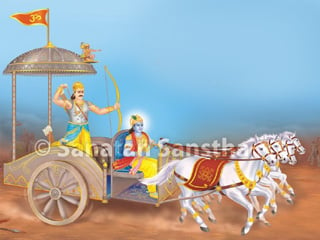
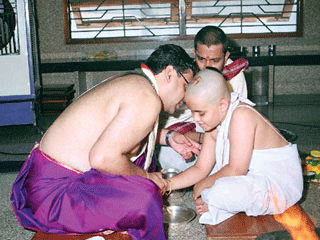 How does the system of stages of life help in attaining four pursuits?
How does the system of stages of life help in attaining four pursuits?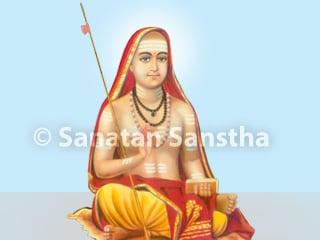 Why can't a renunciant stay in one place for more than three days?
Why can't a renunciant stay in one place for more than three days?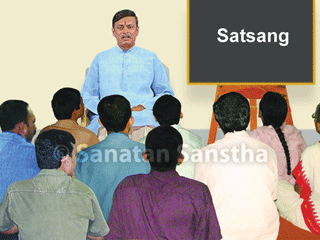 Why is humility a mandatory attribute for Brahman class?
Why is humility a mandatory attribute for Brahman class?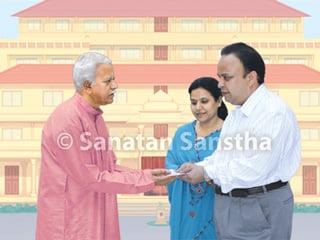 To whom should the offering be made?
To whom should the offering be made?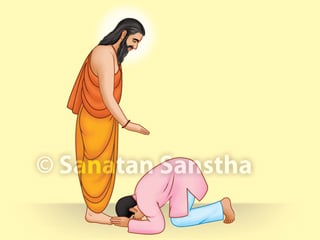 How is the 'class' (varna) of an individual determined?
How is the 'class' (varna) of an individual determined?